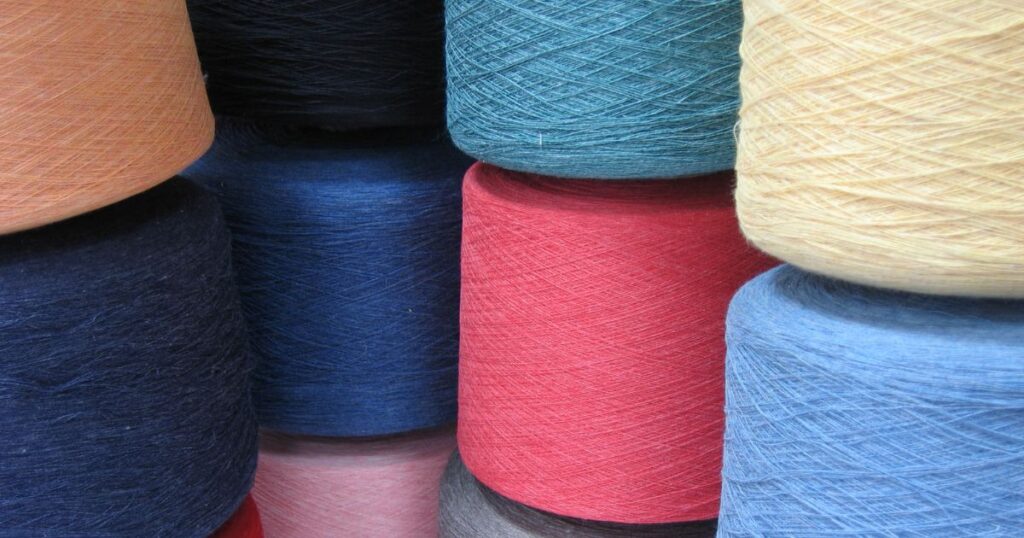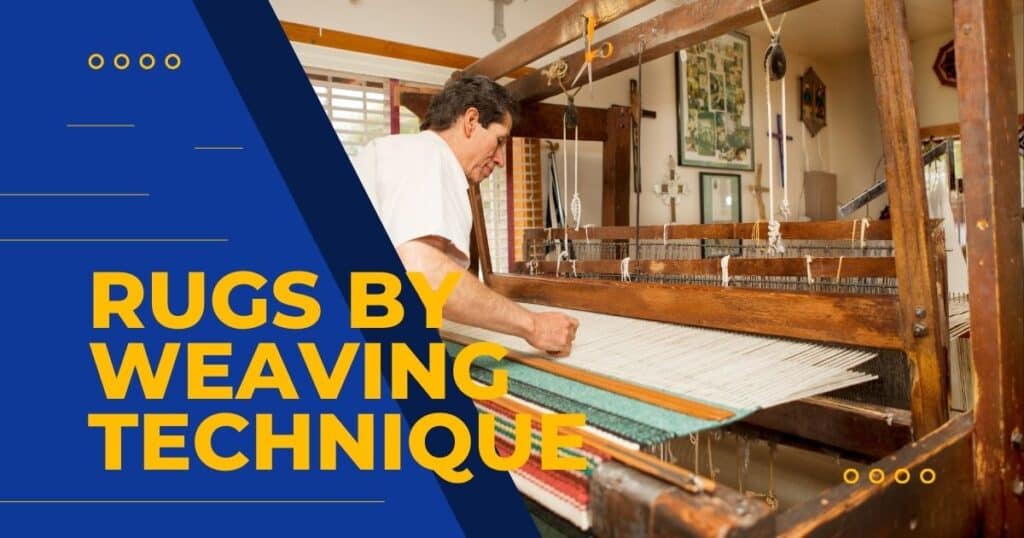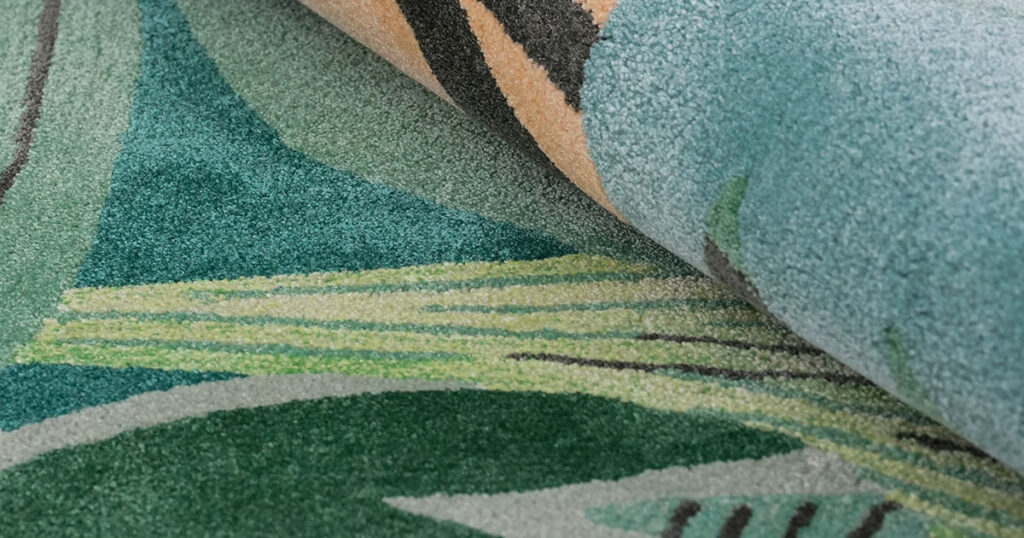This post will tell you some essential things about custom moss rugs from the point of view as a custom rug maker.
After reading this post, you will gain knowledge about:
- What customization options are possible with custom moss rugs
- What design themes you can consider for your custom moss rug
- Other things – what benefits they offer, where to place them, etc.
Let’s get started.
What Are Tufted Moss Rugs?
Tufted moss rugs are textured floor coverings designed to mimic natural moss.
Despite their realistic appearance, they’re actually made from tufted rug yarns like New Zealand wool or acrylic yarn.
- These rugs feature a distinctive three-dimensional surface with varying pile heights.
- Their undulating texture resembles moss growing on forest floors.
The combination of high and low piles gives each moss rug depth and dimension.
This obvious unique feature – compared with other rug types – turns it into a textural artwork for your floor.
Origin & Design
The design concept originates from bringing nature indoors in a tactile way.
They offer a unique blend of natural inspiration and modern aesthetics, aligning with contemporary tastes for biophilic and eco-chic decor.
- Each rug typically features a three-dimensional “pile” surface that looks like a little patch of forest floor.
- High and low tufted sections create undulating mounds and depressions, similar to clumps of real moss on rocks or soil.
This intricate high-low pile technique gives depth and dimension.
This makes each rug a textural artwork for your floor.
Materials & Construction
Tufted moss rugs are most often hand-tufted using soft yarns.
New Zealand wool, acrylic and cotton are the 3 most popular yarn types.
New Zealand wool
New Zealand wool is the yarn type that we’ve used the most to make moss rugs, as a professional custom moss rug manufacturer.
This premium wool features strength and softness, and it gives the rug a luxurious feel and durability.
Below is one of the most popular moss rug design.
- Many premium moss rugs use 100% New Zealand wool yarn for its vivid color and longevity.
Synthetic yarn
Synthetic fibers – particularly acrylic yarn – are also common choices for custom tufted moss rugs.
You can either use a synthetic yarn alone or blend it with wool.
Usually, this is to save some cost, more or less.
- Acrylic yarn is often used for its bright color options and lower cost.
- Acrylic fibers is soft and vibrant, which makes moss rugs eye-catching shades beyond what wool can achieves
Below is a closeup view of the New Zealand wool yarn.
Below is a close up of acrylic yarn.
As you can see, they do have some visual differences, but not dramatically huge.
Here are some buying tips for you:
- The visual appearances between wool and acrylic won’t be too much.
- Their costs can be a big difference, approximately wool to acrylic is: 3:1.
- Each yarn type has color palettes of its own – the colors can be similar but not always exactly the same.
- You can ask a professional custom moss rug maker to show you all the color poms and pick the ones you prefer.
Below is a set of color palette that we use for acrylic yarn.
And remember, each custom rug maker has yarn color palettes of their own.
Make sure to check the colors before buying, if color matching is important for your bespoke rugs.
Blending yarns
It a common practice to combine 2 or more yarn types to achieve a desired result – visual effect or functional feature.
For example, you can combine New Zealand wool and silk to make a custom moss rug look more real and also softer.
Here is an example for combining New Zealand wool and acrylic yarns for the same tufted moss rug:
- Use wool for the main green pile and acrylic for accent threads
- In this way, you can balance durability and colorfulness, and also reduce some cost.
After confirming which yarn to use, artisans use a tufting gun or punch-needle to shoot yarn through a fabric backing
- This procedure creates loops or strands that make up the “moss” texture.
Rug piles create a plush, springy pile that resembles natural moss and can be dyed in rich green hues or other colors.
Takeaway:
Each yarn type has it advantages and disadvantages.
- None of them are perfect, so learn the basics to make informed buying decisions.
- But if you are not sure, then follow the majority of our customers, and pick New Zealand wool.
If you wish to know more about the pros and cons of rug yarns, please refer to our guide: 4 Popular yarns for custom tufted rugs
Styles & Types
Custom moss rugs come in a variety of styles.
Most popular themes
Among them, woodland and forest series are the most popular ones we have produced for customers.
We have also provided bespoke services for themes like ocean, spring grass, snowy mountains, brown sugar, etc.
Other themes
Many are free-form or oval, resembling a natural patch of moss with organic edges.
- Others might be standard rectangles or circles but with a moss-like surface pattern.
There are also creative variations.
- Some designers incorporate additional motifs like small tufted “mushrooms” or stones amid the moss, to enhance the woodland illusion.
Meanwhile, some designs take a more abstract approach.
- For example, blend geometric patterns with mossy texture (imagine a grid or stripes where the fills are moss-green tufted sections).
The pile height can also vary across a rug to create patterns: areas of looped low pile against areas of higher cut pile form shapes (like leaf patterns or rock shapes) purely through texture differences.
Theme and Design Categories
Custom moss rugs has an important delight – they can offer vast design possibilities.
- Moss rugs are often custom-made or artist-made, they come in a wide range of themes, particularly nature-inspired themes.
- They can suit various interior styles or personal tastes.
Below we explore some popular themes and design categories for moss rugs.
Let us show you how designers take the basic concept (a rug that looks like moss) and run in many imaginative directions.
Woodland & Forest Motifs
We can say this is the most common inspiration, based on our production records.
Moss rugs with woodland or forest themes typically comes with an irregular shape – as if you sliced out a piece of ground from a forest.
- They feature a mix of green shades – emerald, olive, moss green, chartreuse – to mimic the natural variation in real moss.
- You may also want to incorporate touches of brown (to suggest soil or tree bark) and gray (like stone).
- Some rugs in this theme include adorable details like tufted fungi (mushrooms), tiny felt leaves, or pebble-like shapes.
For example, a rug might have small round tufted bumps in off-white or red with white spots, resembling mushrooms nestled in the “moss.”
These details can be subtle or whimsical, depending on the maker.
The overall effect is very much “fairy forest”.
This category connects strongly with cottagecore and fantasy decor trends – people who decorate with fairy lights, vintage wood furniture, and houseplants might gravitate to a forest moss rug as a perfect anchor piece.
It brings a storybook charm to the room.
Culturally, mossy forests evoke a sense of ancient nature and magic (think of mossy Japanese gardens or European fairy tales set in woods).
In fact, moss has special symbolism in some cultures: in Japanese culture, for instance, moss is admired as a symbol of beauty, simplicity, humility, and age-old tranquility.
A moss rug that draws on Japanese garden aesthetics might include very refined placements of moss patches and open space, much like a Zen garden with moss.
Whether you want a Middle-earth vibe, a Pacific Northwest forest feel, or a Zen temple courtyard, there’s likely a moss rug design to suit.
These woodland designs look great in rooms with earth-tone color schemes, lots of natural wood, or where you want a touch of “forest bathing” calm.
Modern & Geometric Patterns
Some designers cleverly merge the organic with the geometric.
Instead of a free-form moss spread, they design geometric layouts using the moss texture.
- For example, you might see a rug that is a perfect circle or rectangle but within it has a pattern like a checkerboard or stripes where one of the “colors” is represented by green mossy texture.
- This shows that moss rugs can also appeal to modern and even minimalist sensibilities if done in a structured pattern.
Abstract modern art can be an influence: imagine blocks of color or shards of shapes, where some blocks are green tufted moss, others are smooth low-pile areas in contrasting color.
The contrast between the wild texture and clean lines can be striking and very artistic.
These designs fit well in eclectic or modern interiors that still want a hint of nature.
They say “yes, I’m a modern rug, but I carry a piece of the forest within me.”
Color schemes in geometric moss rugs aren’t limited to green; they might incorporate white, black, or bold dyed colors for the non-moss parts to create a strong pattern.
For instance, a rug might have a hexagon pattern where some hexagons are green, others are blue or beige, forming a honeycomb of moss and sky-like colors.
The key is a deliberate pattern that the eye can follow, as opposed to the random distribution of a natural moss patch.
This category shows the versatility of the moss concept – it can be surprisingly chic and contemporary when structured in the right way.
Zen Garden Inspirations
Given moss’s association with Japanese gardens and zen retreats, it’s no surprise that some moss rugs draw directly from those images.
A Zen garden-inspired moss rug might feature areas of moss interspersed with “raked sand” patterns. Technically, this can be achieved by using looped yarn for certain sections (to appear as orderly lines or waves) next to higher cut-pile moss sections.
The rug could be a rectangle representing a mini garden: green tufted islands (moss “islands”) on a beige or gray background with gentle linear grooves (representing sand or gravel).
One could even tuft in a few larger shapes meant to be stepping stones or rocks (perhaps using a darker, tightly packed loop for a rock texture).
The color palette here would be serene and muted: various greens, complemented by neutral stone greys, sand beiges, maybe a hint of white.
The design would be asymmetrical but balanced, echoing the principles of wabi-sabi (finding beauty in natural imperfection and harmony).
Such a rug would be perfect in a meditation corner, a tea room, or a spa.
It provides a sense of order and calm, much like a carefully raked karesansui (dry landscape garden).
Even without explicit sand patterns, a zen-inspired rug might simply be very minimal – for instance, mostly a single shade of green with subtle variation in pile height, focusing on texture over color, embodying simplicity and peace.
Add a small fountain or a bonsai plant in the room, and the atmosphere is complete.
Creative Color Variations
Green is the natural choice for mimicking moss, but you can explore a rainbow of possibilities.
Moss rugs can be found in fantastical colors – essentially re-imagining what moss could be in a fantasy world or abstract art.
It still uses the tufted “moss” texture, but the color scheme and theme are totally different from a forest floor.
This opens up a category of whimsical or surreal moss rugs.
You might see a rug in shades of pink and lavender, giving a dreamy, perhaps alien moss landscape vibe.
These make very bold artistic statements and can complement interiors that use those accent colors.
A purple and green mix could tie together a room with purple upholstery and lots of plants, for instance.
Why Choose a Moss Rug
Visual Appeal & Unique Design
A moss rug instantly creates a focal point in any room. The lush green tones and organic texture bring the outdoors in, adding depth and interest to your space.
Unlike flat, conventional rugs, moss rugs offer a distinctive 3D texture that transforms your floor into a mini landscape.
This picture shows a small corner of a moss rug.
Within such a small section, it already has 5 different pile height to create a vivid dimensional effect.
The verdant look soothing and refreshing – like having a bit of forest floor under your feet.
Whether your home is modern minimalist or cozy bohemian, a moss rug adds character and natural charm.
Tactile Comfort
Beyond their striking appearance, these rugs are wonderfully plush and comfortable underfoot. The high-pile wool or acrylic yarns create a soft, cushy surface that feels delightful to walk on – similar to stepping on actual mossy ground.
The varying pile heights gently massage your feet, making the rug a cozy spot to sit or play on. The thick yarn also insulates your floor, keeping feet warm on chilly mornings.
Natural Ambiance & Stress Reduction
The rich green palette and soft forms of a moss rug can have a calming, stress-relieving effect. Green is known to be easy on the eyes and associated with tranquility. Many find that these biophilic design elements help create a sense of well-being in a room, evoking memories of walks in the woods or peaceful gardens.
Low Maintenance
Despite their dramatic appearance, these rugs are generally low-maintenance. Since they’re made from yarn rather than living plants, there’s no need for watering, trimming, or special lighting. Regular vacuuming (on a gentle setting) keeps them clean, and they resist showing dirt because of their varied texture and colors.
Where Moss Rugs Work Best
Moss rugs shine in various settings throughout your home:
Living Rooms
Place a moss rug under a coffee table or in a reading nook to create a cozy gathering spot. It makes seating areas feel inviting and grounded, especially when paired with natural elements like wooden furniture, plants, and stone accents.
Bedrooms
A moss rug beside the bed gives you a soft place to land your feet in the morning and adds a serene touch to your sleeping space. They work beautifully with white linens and wood tones for a fresh, natural feel.
Children’s Rooms & Nurseries
The soft, cushiony texture of moss rugs creates a comfortable play surface for little ones. Kids are often delighted by the texture and imaginative landscape – small children might drive toy animals or cars over the “hills” of the rug! The cushioning is also helpful for toddlers learning to walk.
Meditation & Relaxation Spaces
Moss rugs are perfect for meditation corners, yoga areas, or home spas. They visually reinforce the connection to nature that’s often sought in these spaces. Imagine a quiet corner with floor cushions and a moss rug as a small island of greenery – very conducive to mindfulness.
Is a Moss Rug Right for You?
A tufted moss rug might be perfect if you:
- Love unique, conversation-starting decor pieces
- Appreciate biophilic design that connects your home to nature
- Want a rug that adds texture and visual interest
- Enjoy the comfort of a plush, high-pile rug
- Are looking for a statement piece that can transform a room
Tufted moss rugs strike a beautiful balance between practical floor covering and artistic statement. They bring a touch of natural wonder indoors while providing all the comfort and functionality you expect from a quality rug.
Whether you’re creating a cozy reading nook, a playful children’s space, or a tranquil meditation corner, a moss rug can be the perfect foundation for your design vision – adding texture, color, and a bit of woodland magic to your everyday spaces.















